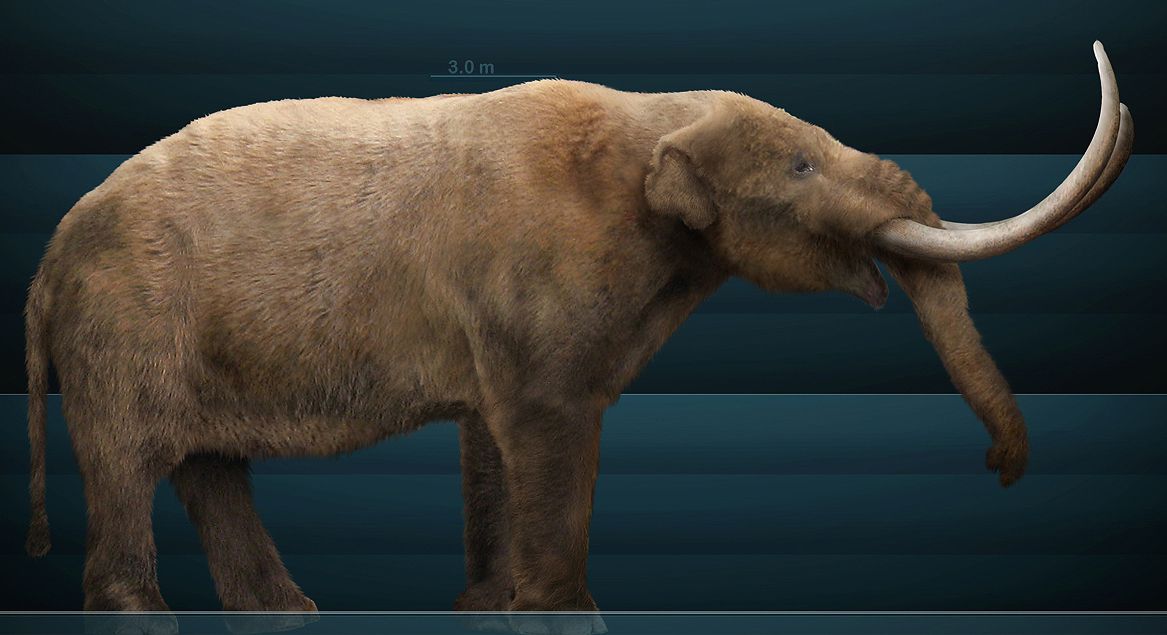IF THE RIVER COULD TALK
THE BEGINNING
12,000 Years Ago - Prehistoric Animals and People
Depending upon which Delaware language dialect was used, as there were three, the names given to the river were Wapeksippu and Wapahani. Both names have multiple meanings one of which is, "At a Place Where There is Much White Earth." This will be talked about in the future.
In modern-day Madison County, White River meanders approximately 20 miles as it makes its way westward, traversing the county's width. In those 20 miles, the river has been witness to a plethora of events that have shaped our history and to some extent influenced how we live today.
If the river could talk, the tales it could tell. If only for the time it takes to tell this story, Let's pretend it can and allow it to speak of its existence in Madison County. Like all stories it has a beginning.
How Old Is White River?
When measured in geologic time as defined by fossil evidence, it is a relative newcomer. Geologists have placed its origin sometime during the Pleistocene Epoch of the Quaternary Period of the Cenozoic Era which began 2.6 million years ago and ended 11,700 years ago. Thus, the river's origin is somewhere in between, but more than likely--in round numbers--it is 12,000 years old.
The Pleistocene Epoch, or more commonly called the Ice Age, is thought to have consisted of as many as 11 major glacial stages. The most recent stage was the Wisconsin Glacial Episode. It extended from approximately 85,000 to 11,000 years ago and covered a large portion of North America and by it powerful movements radically altered the geography of North America north of the Ohio River, including all of Indiana. It is responsible for, among other natural formations, the creation of the Great Lakes, the Mississippi River, and Niagara Falls.
When the ice melted, the rocks and other debris carried along by the glacier were left to form what is known as the glacial drift. The greater part of Madison County is covered with a deep deposit of glacial drift having underlying minerals and stone, including sandstone and Niagara limestone.
Melting Glacier
The West Fork begins south of Winchester in Randolph County and is much longer that the East Fork, covering 312 miles. After the junction of the two forks, the river flows another 50 miles before entering the Wabash River across from Mt. Carmel, Illinois. Madison County is shaped like a rectangle measuring 30 miles in length and 15 miles in width. The West Fork of White River crosses the eastern boundary about one and a half miles northeast of Chesterfield and meanders for almost 20 miles across the county in a general westerly direction before crossing the western boundary not far from Perkinsville; roughly one-third of the county lies south of the river and two-thirds to the north.
Packed into those 20 miles in and along the river's banks is a large part of the county's very rich and colorful history. If the river could talk, the tales it could tell of happenings it has witnessed during its 12,000 years of existence. Nature was the dominant feature at one time. In the beginning, native trees included white, red, and burr oak; white and swamp ash; shell bark, bitter, and white hickory; hard maple, slippery, and swamp elm; black and white walnut; poplar; sycamore; cherry; and gum. The area was heavily forested and was a natural habitat for a variety of wild animals.
Thousands of years before Christopher Columbus arrived in the Americas, which led the way for the Europeans, an ancient race of people lived in North America. These people were the ancestors of the Native American Indians. Along with the native people that lived around the Great Lakes area, large animals roamed. One of these prehistoric animals was the mammoth(sometimes referred to as the woolly mammoth) which looked somewhat like a modern day elephant. There were also giant bison which were very similar to today's bison. In addition, there were large wolves, saber-toothed tigers, bears, and mountain lions.
The first people who lived in what would later become Indiana were hunters of these and other animals. They cooked their food over open fires and used the skins of animals for clothing and shelter. As time went on, hunting and gathering among the Indians changed. They began to hunt smaller animals such as deer and rabbits. To do so, they had to change their weapons. Small spearheads were used in place of large spearheads. Eventually the bow and arrow was developed because it was easier to hunt small, quick animals.
Mastodons Were Here

We can be certain that prehistoric Native Americans were also present. They left be hinds evidence of their existence. One such artifacts, which was found in 1948 along the river's edge, is part of the Madison County Historical Society's collection. It is a large stone ax head that has been dated to approximately 6,000 years ago.
The "If the River Could Talk" series will continue throughout 2016 beginning with four articles spanning January, February, and March that will examine the 12 known river fords in Madison County as to their formation, location, importance, and some enticing stories.
Stephen T. Jackson, Madison County Historian

Throughout Indiana's Bicentennial year of 2016, Steve Jackson, Madison County Historian, will be authoring "If The River Could Talk." This series will feature people, places, and events that takes place in and around White River.
The series is an officially endorsed legacy project of the Indiana Bicentennial Commission.
Madison County Historical Society|15 West 11th Street, P. O. Box 696, Anderson, Indiana 46015-0696|(765)683-0052|madisonchs10@gmail.com